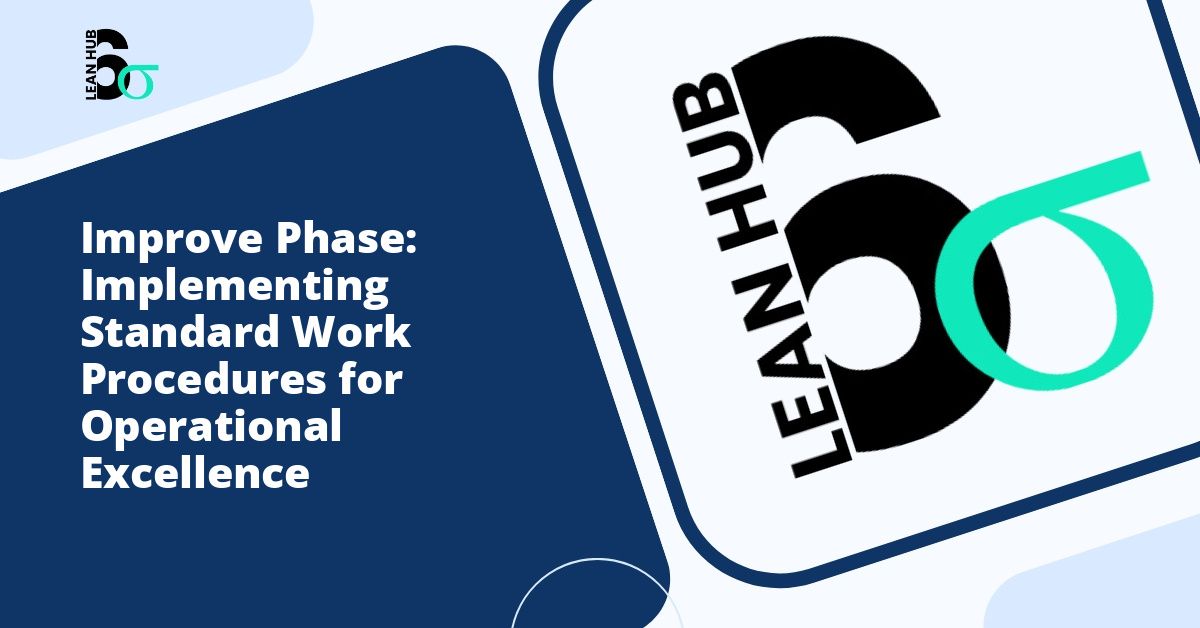Organizations that invest time and resources into process improvement initiatives often face a critical challenge: sustaining the gains they have achieved. After identifying inefficiencies and implementing solutions, the next essential step involves documenting these improved processes through Standard Operating Procedures (SOPs). Without proper documentation, even the most effective improvements can gradually fade as employees revert to old habits or new team members lack guidance on the correct methods.
This comprehensive guide explores how to create effective Standard Operating Procedures that preserve your process improvements and ensure consistent execution across your organization. You might also enjoy reading about 5S Implementation Guide: Organizing Your Workplace for Maximum Efficiency.
Understanding the Importance of Standard Operating Procedures
Standard Operating Procedures serve as the backbone of operational consistency within any organization. These detailed, written instructions outline the exact steps required to complete specific tasks or processes. When you have invested effort in improving a process, documenting it through an SOP becomes essential for maintaining those improvements over time. You might also enjoy reading about How to Generate Improvement Solutions: Brainstorming Techniques for Six Sigma Teams.
SOPs provide numerous benefits to organizations, including reduced training time for new employees, decreased variation in output quality, improved compliance with regulatory requirements, and enhanced ability to identify further improvement opportunities. In the context of lean six sigma methodologies, SOPs represent a critical tool for standardizing work and eliminating waste. You might also enjoy reading about How to Conduct a DOE Study: Step-by-Step Guide for Six Sigma Projects.
The Connection Between Process Improvement and SOP Development
Process improvement methodologies such as lean six sigma follow structured approaches to enhance operational efficiency. During the recognize phase of any improvement initiative, organizations identify problems, define project scope, and understand current state processes. This recognition sets the foundation for subsequent analysis and improvement activities.
Once improvements have been implemented and validated, the focus shifts to control and sustainability. This transition point represents the ideal moment to develop or update Standard Operating Procedures. The SOP captures the improved process in its optimized state, ensuring that all stakeholders understand and follow the new approach consistently.
Preparing to Write Your Standard Operating Procedure
Before beginning the actual writing process, thorough preparation ensures that your SOP will be comprehensive, accurate, and useful. This preparation phase involves several critical activities that lay the groundwork for successful documentation.
Gather Process Information
Start by collecting all relevant information about your improved process. This includes process maps or flowcharts, data from improvement activities, input from subject matter experts, and any regulatory or compliance requirements that apply. During the lean six sigma recognize phase, you likely developed baseline documentation of the original process. Now you need comparable information about the improved version.
Identify Your Audience
Understanding who will use your SOP directly influences how you write it. Consider the technical expertise of your readers, their familiarity with the process, the frequency with which they will perform the tasks, and any language or literacy considerations. An SOP written for experienced technicians will differ significantly from one intended for temporary workers with minimal training.
Determine the Appropriate Format
Standard Operating Procedures can take various formats depending on their purpose and complexity. Simple sequential steps work well for straightforward processes, while hierarchical steps suit procedures with multiple sub-tasks. Flowcharts prove valuable for processes with decision points, and annotated photographs or videos excel when visual demonstration enhances understanding.
Essential Components of an Effective SOP
Regardless of the specific format you choose, every Standard Operating Procedure should include certain fundamental elements that provide context and ensure proper use.
Title and Identification Information
Begin with a clear, descriptive title that immediately communicates the procedure’s purpose. Include identification details such as document number, revision number, effective date, and the department or area where the procedure applies. This information helps with document control and ensures users reference the correct version.
Purpose and Scope
Clearly state why this procedure exists and what it aims to accomplish. Define the scope by specifying what the procedure covers and, equally important, what it does not cover. This clarity prevents confusion and helps users determine whether this SOP applies to their specific situation.
Roles and Responsibilities
Identify who performs each step or task within the procedure. Specify any required qualifications, certifications, or training. When multiple people or departments are involved, clearly delineate each party’s responsibilities to avoid gaps or overlaps in execution.
Materials and Equipment
List all materials, tools, equipment, and resources needed to complete the procedure. Include specifications, quantities, and any special handling or safety considerations. This information helps users prepare properly before beginning the process.
Step-by-Step Instructions
The procedural steps form the core of your SOP. Write each step clearly and concisely, using action verbs to begin each instruction. Number the steps sequentially and maintain a logical flow. Include decision points, quality checks, and safety warnings at appropriate locations. If the lean six sigma recognize phase identified specific risk points or failure modes, ensure your instructions address these areas explicitly.
References and Related Documents
Cite any related procedures, policies, regulations, or technical documents that users might need. This section helps readers find additional information and understand how this SOP fits within the broader organizational framework.
Best Practices for Writing Clear and Effective SOPs
The quality of your writing directly impacts how well users can follow and implement your Standard Operating Procedure. Apply these best practices to enhance clarity and usability.
Use Simple, Direct Language
Avoid jargon, technical terms, and acronyms unless your audience clearly understands them. When technical language is necessary, provide definitions or a glossary. Write in short sentences and use active voice whenever possible. Instead of writing “The valve should be turned clockwise,” write “Turn the valve clockwise.”
Be Specific and Concrete
Vague instructions lead to inconsistent execution. Rather than writing “Heat to a moderate temperature,” specify “Heat to 350 degrees Fahrenheit.” Provide exact measurements, times, and specifications wherever applicable. This precision reflects the data-driven approach inherent in lean six sigma methodologies.
Incorporate Visual Aids
Photographs, diagrams, flowcharts, and screenshots significantly enhance understanding, especially for complex or technical procedures. Visual aids reduce ambiguity and help users verify they are performing steps correctly. Ensure all visuals are clear, properly labeled, and referenced within the text.
Include Safety and Quality Checkpoints
Embed safety warnings at relevant points rather than listing them only at the beginning. Use standardized signal words like “DANGER,” “WARNING,” and “CAUTION” according to established conventions. Similarly, incorporate quality checks at critical steps to catch errors before they propagate through the process.
Testing and Validating Your SOP
Writing the SOP represents only part of the development process. Before finalizing and distributing the document, validation ensures it accurately captures the improved process and enables consistent execution.
Have individuals who were not involved in developing the procedure attempt to follow it exactly as written. Observe whether they can complete the process successfully without additional guidance. Gather feedback about unclear instructions, missing information, or confusing elements. This testing often reveals assumptions you made during writing that are not obvious to others.
Subject matter experts should review the SOP for technical accuracy, completeness, and alignment with regulatory requirements. Quality assurance personnel can verify that the procedure includes appropriate controls and checkpoints. Management should confirm that the SOP supports organizational objectives and policies.
Implementing and Maintaining Your SOPs
After finalizing your Standard Operating Procedure, successful implementation requires communication, training, and ongoing maintenance.
Announce the new or revised SOP through appropriate channels and make it easily accessible to all relevant personnel. Provide training to ensure users understand not just the steps but the reasoning behind them. When people comprehend why a process works a certain way, they are more likely to follow it consistently.
Establish a regular review schedule to keep SOPs current. As processes evolve, technology changes, or regulations update, your procedures must reflect these developments. Assign ownership for each SOP to someone responsible for maintaining its accuracy and relevance.
Conclusion
Standard Operating Procedures transform process improvements from temporary gains into sustained competitive advantages. By capturing the optimized processes developed through improvement initiatives, SOPs ensure consistent execution, facilitate training, and provide a baseline for future enhancements. Whether your organization employs lean six sigma or other improvement methodologies, the recognize phase and subsequent improvement activities only deliver lasting value when documented through effective SOPs.
Investing time in developing clear, comprehensive, and user-friendly Standard Operating Procedures pays dividends through reduced errors, improved efficiency, and organizational knowledge preservation. Follow the guidelines presented in this article to create SOPs that truly support your improved processes and drive ongoing operational excellence.








